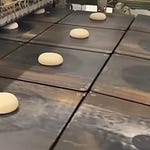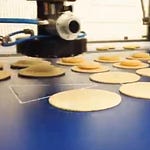At the heart of this process are proteins, particularly gluten-forming proteins, which build the viscoelastic structure that holds gas and gives dough its unique handling properties.
1. Protein Structure and Bonding
Proteins are made of amino acid chains called polypeptides. These chains:
Can fold into stable shapes like helices
Interact through hydrophobic and hydrogen bonds
Can form larger aggregates through chemical interactions
A crucial bond in dough structure is the disulfide (SS) bond, formed when two sulfhydryl (SH) groups are oxidized and linked. When proteins are in their reduced form, SH groups remain free, and the chains exist individually. Upon oxidation, SS bonds form between chains, creating an interconnected network.
2. Glutenins and Gliadins: Key Players
Two main protein classes in wheat flour drive this structure.
Gliadins:
Provide viscosity and extensibility.
They contain a limited number of cysteine residues that form mostly intramolecular disulfide bonds. These bonds contribute to extensibility rather than forming a network structure.
Gliadins do not form part of the cross-linked gluten network.
Glutenins:
Contains an extra cysteine at the chain end. This allows them to form intermolecular SS bonds between chains, building the backbone of the gluten network.
This structure gives dough its strength and elasticity.
This network determines the dough’s rheological properties, balancing strength and extensibility.
3. Impact of Mixing and Oxidation
During mixing:
Shearing forces can break SS bonds, allowing protein chains to rearrange.
Oxidizing agents promote the formation of new SS cross-links.
The gluten network strengthens, improving gas retention and elasticity.
This dynamic process continues through proofing and baking, ensuring the dough maintains structure as it expands.
4. Practical Implications
Mixing time: Overmixing can damage the network, while undermixing limits its formation.
Oxidizing agents: Proper use helps stabilize the gluten structure.
Protein quality: High glutenin content enhances strength, while balanced gliadin ensures extensibility.
👉 Thanks for reading! 💬 Any experiences to share with us?? – We’d love to hear your story!
Source: https://lnkd.in/dfC8JA4p










